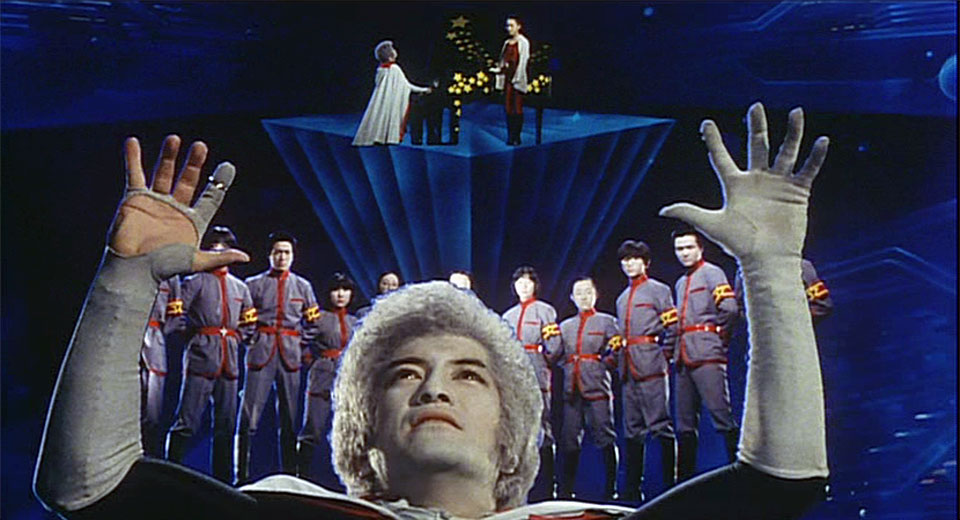
After House (1977), School In The Crosshairs (1981) is Nobuhiko Obayashi’s most imitated film. Obayashi directed School In The Crosshairs amidst a flurry of output within the “Lolicon” genre. Each of these films features Obayashi’s unique fantasy imagery and practical effects. Unlike Obayashi’s best films from this period, particularly I Are You, You Am Me (1982), School In The Crosshairs isn’t overly concerned with employing the fantasy elements of the narrative as a means of examining contemporary Japanese society as it pertains to the individual.
There are a number of notable intersections between anime, manga and Obayashi’s unique take on the coming of age story at the heart of School In The Crosshairs. The more Pop oriented nature of these mediums informs Obayashi’s approach, dictating that the more intimate aspects of the narrative take a back seat to highly expressive spectacles. School In The Crosshairs is content to be an anti-fascist picture whose general political statement is enough to motivate its existence. Though humanism may have been traded in for campy political posturing, School In The Crosshairs remains a stunning example of Obayashi’s inventiveness as an author of film images.
The premise for the film is more fantastic than most of Obayashi’s early eighties films, incorporating supernatural, cosmic, science fiction and elements of the broad sex comedy genres. Obayashi’s more intimate portraits of Japanese society centered around one fantasy element or supernatural event not an entire world composed of these sorts of forces. One of the most imitated aspects of Obayashi’s film and the novel that inspired it is the idea that one school girl with telekinetic powers must save her school from a cosmic entity of pure evil. School In The Crosshairs did not originate this idea but it certainly popularized it, largely due to Obayashi’s stylistic handling if the concept.
Even a more commercial venture like School In The Crosshairs clearly wears the marks of Obayashi’s tender devotion to the cinema. Producer Kadokawa Haruki’s films aren’t known for their artistry but rather for their modest budgets, teen idols and the rapid speed at which Haruki was able to churn out these films. However in Obayashi’s hands Haruki’s production takes on a kind of visual poetry. One can see evidence of Obayashi’s commitment in the matte paintings and effects that give the sky in School In The Crosshairs an expressiveness born out of comic books. It is in these little touches that one sees School In The Crosshairs elevated to fine art.
